Can Aged Marijuana Strains Maintain Their Potency?
Marijuana's natural aging process doesn't diminish its potency or enjoyment, especially in…….
Welcome to an immersive exploration of the captivating world of colorful marijuana strains, a phenomenon that has not only transformed the cannabis industry but also sparked curiosity and debate worldwide. This article aims to guide readers through the intricate tapestry of these unique varieties, shedding light on their origins, impacts, and the diverse perspectives they evoke. From their vibrant hues to their potential therapeutic benefits, colorful strains represent a fascinating fusion of science, culture, and human ingenuity.
Definition: Colorful marijuana strains refer to cannabis varieties that boast an extraordinary range of colors in their flowers, leaves, and sometimes even resin. These colors extend beyond the traditional green and brown spectrum, displaying vibrant hues like purple, blue, pink, orange, and even red. This visual diversity is a result of sophisticated cultivation techniques and natural genetic variations within the Cannabis sativa plant.
Core Components: The allure of colorful strains lies in several key factors:
Phytochemicals: These strains often contain higher levels of specific cannabinoids and terpenes, which are responsible for their distinct aromas, flavors, and potential therapeutic effects. For instance, purple strains are associated with higher concentrations of anthocyanins, a class of phytochemicals known for their antioxidant properties.
Genetics: The genetic makeup of a plant plays a pivotal role in determining its color. Rare genetic mutations and cross-breeding techniques have led to the development of these visually striking varieties. Selective breeding practices allow cultivators to enhance desirable traits, including color, while maintaining or improving other attributes.
Cultivation Techniques: Skilled growers employ specialized methods to maximize color expression. This includes precise control of lighting, temperature, and nutrition, which can influence pigment production in the plant. Some strains are even cultivated in specific environments to intensify their hues.
Historical Context: The appreciation for colorful marijuana has deep roots in both ancient cultures and modern cultivation practices. In ancient times, various civilizations revered certain cannabis varieties for their medicinal properties and spiritual significance. However, the modern fascination with color began to emerge in the late 20th century as cultivators started experimenting with new genetic lines and cultivation techniques. This trend gained momentum with the rise of medical marijuana and the growing acceptance of cannabis culture worldwide.
The global impact of colorful marijuana strains is a testament to their multifaceted appeal, influencing various aspects of the cannabis industry and society at large.
Regional Adoption: Different regions have embraced colorful strains with unique enthusiasm:
| Region | Impact and Trends |
|---|---|
| North America | The US and Canada are hotspots for colorful strain cultivation, with cultivators pushing the boundaries of pigment expression. California’s legal market has seen a surge in rare, highly colored strains, attracting both local enthusiasts and international collectors. |
| Europe | European countries like Germany and the UK have embraced vibrant strains, with cultivators focusing on organic, natural methods to enhance color. These strains often command premium prices due to their scarcity and aesthetic appeal. |
| Asia | In countries like Japan and South Korea, colorful marijuana has gained popularity for both medicinal and recreational use. The unique flavors and potential therapeutic benefits of these strains have captivated consumers, leading to increased demand. |
| Global Market | The international cannabis market is witnessing a surge in demand for rare, exotic colors, fueling cross-border trade and fostering collaboration among cultivators worldwide. Online platforms play a significant role in connecting growers and buyers globally. |
Trends Shaping the Future: Several key trends are shaping the global landscape of colorful marijuana strains:
Sustainability Focus: There is a growing emphasis on sustainable cultivation practices, with cultivators adopting eco-friendly methods to reduce environmental impact while enhancing strain quality.
Terpenes and Aromas: Consumers are increasingly interested in strains with specific terpene profiles, which contribute to unique flavors and potential therapeutic effects. This trend has led to the development of “aromatherapeutic” strains.
Hybridization and Cross-Breeding: Cultivators are continually crossing different strains to create new, highly desired varieties with amplified colors, yields, and specific characteristics.
Regulatory Harmonization: As more countries legalize cannabis, regulatory frameworks are becoming more standardized, providing a level playing field for cultivators and fostering global trade.
The economic implications of colorful marijuana strains are profound, impacting various sectors from agriculture to tourism and beyond.
Market Dynamics: The global cannabis market is experiencing rapid growth, with the legalization of recreational and medicinal use in numerous countries. According to a report by Grand View Research, the global cannabis market size was valued at USD 24.5 billion in 2021 and is expected to expand at a CAGR of 27.3% from 2022 to 2030. This expansion directly influences the demand for colorful strains, as consumers seek out unique, premium products.
Investment Patterns: The allure of rare, high-quality colorful strains has attracted significant investment in the cannabis industry. Cultivators specializing in these varieties often command premium pricing, leading to substantial returns on investment. Private equity firms and venture capitalists are increasingly targeting cannabis startups, including those focused on specialty strains.
Tourism Boost: The unique aesthetic appeal of colorful marijuana has become a draw for tourism in some regions. Cities like Amsterdam and Denver have cannabis-themed tours and events, attracting visitors interested in experiencing the latest strain varieties. This trend contributes to local economies and fosters cultural exchange around cannabis culture.
Beyond their visual allure, colorful marijuana strains hold promise for various therapeutic applications, making them a subject of intense scientific interest.
Cannabinoid and Terpene Profiles: Different colors often correlate with distinct cannabinoid and terpene compositions. For example:
Purple Strains: Rich in anthocyanins and myrcene, these strains are known for their relaxing and analgesic properties. They have been associated with potential benefits for anxiety, insomnia, and chronic pain.
Blue/Light Green Strains: High in limonene and linalool, these strains may have anti-inflammatory effects and promote mental clarity.
Orange/Red Strains: Containing high levels of beta-caryophyllene (BCP), they are believed to have anti-anxiety and neuroprotective properties.
Clinical Research: Ongoing clinical trials explore the efficacy of colorful strains for various conditions:
Post-Traumatic Stress Disorder (PTSD): Some studies suggest that specific colored strains may help alleviate symptoms of PTSD by influencing neurotransmitter systems in the brain.
Cancer-Related Symptoms: Research indicates that certain cannabinoids and terpenes found in these strains could aid in managing nausea, pain, and anxiety associated with cancer treatments.
Neurodegenerative Diseases: The neuroprotective properties of some colorful strains are being investigated for their potential role in managing conditions like multiple sclerosis (MS) and Alzheimer’s disease.
The rise of colorful marijuana strains has significant social and cultural implications, evoking a range of reactions and debates.
Cultural Significance: In various cultures, cannabis has deep historical roots, and colorful varieties can carry symbolic meanings. For instance, in some Native American traditions, specific colored strains are used for ceremonial purposes and hold spiritual significance.
Aesthetics vs. Substance: The focus on visual appeal raises questions about the importance placed on color over other factors, such as THC content, terpene profiles, and potential therapeutic benefits. This debate highlights the need for balanced education and consumer awareness.
Legal and Regulatory Considerations: As colorful strains gain popularity, so do concerns about their classification and regulation. Some argue that unique colors should not automatically equate to higher prices and restricted access, while others emphasize the need for standardized testing and quality control.
Diversity and Inclusion: The diverse spectrum of colorful strains can be seen as a celebration of genetic diversity, offering options for various preferences and needs. This inclusivity extends to cultivators, who can cater to niche markets and create unique experiences for consumers.
Despite their allure, the cultivation and consumption of colorful marijuana strains come with certain challenges and ethical considerations.
Environmental Concerns: Intensive cultivation practices, especially those using non-sustainable methods, can have environmental impacts. Overuse of nutrients, water, and energy is a concern, highlighting the need for eco-friendly cultivation techniques.
Standardization and Testing: As the market expands, standardized testing and quality control become crucial. Ensuring consistent potency, purity, and safety across different strains and cultivators is essential to protect consumers.
Ethical Cultivation: Ethical considerations arise in areas like genetic engineering and animal welfare. Some controversial practices, such as forcing colors through artificial means, raise ethical questions among consumers and advocates for natural cultivation methods.
Colorful marijuana strains represent a captivating intersection of science, culture, and human creativity. Their visual diversity, potential therapeutic benefits, and economic impact make them a fascinating subject of study and interest. As the cannabis industry continues to evolve, these unique varieties will undoubtedly play a significant role in shaping consumer preferences, cultivation practices, and societal attitudes towards cannabis.
The spectrum of colorful strains offers something for everyone—from cultivators seeking rare treasures to consumers hoping to unlock specific therapeutic benefits or simply appreciate natural beauty. As research advances and regulations adapt, the world of colorful marijuana is set to expand, promising exciting possibilities on the horizon.
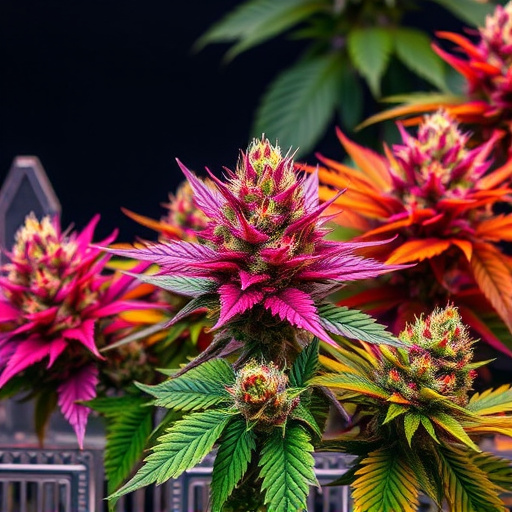
Novice cannabis users should start with safe, easy-to-grow hybrid strains featuring balanced effects…….
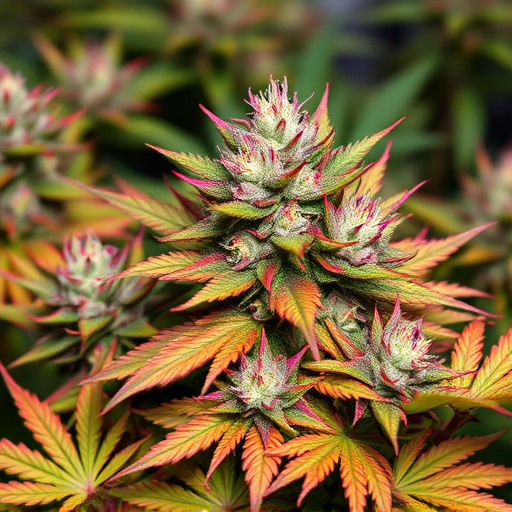
Excessive smoking of potent, colorful marijuana strains can severely harm mental health, leading to…….
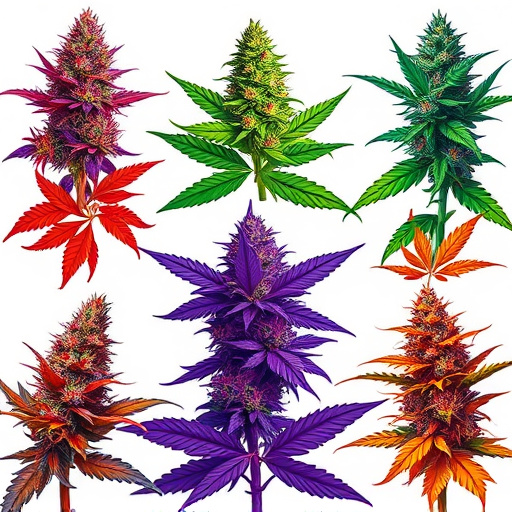
Cannabis relaxes users through its complex chemistry of over 100 cannabinoid molecules, including TH…….
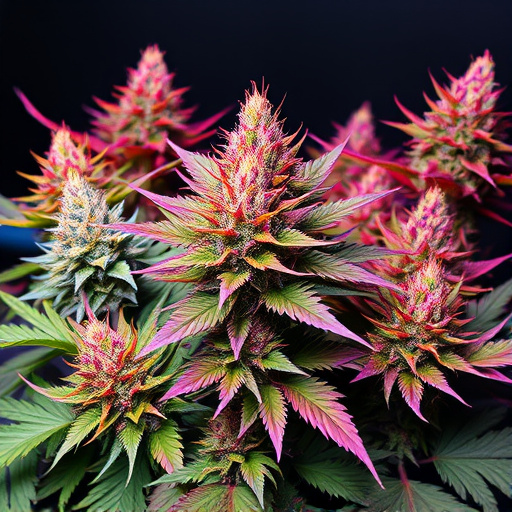
The unique scents of colorful marijuana strains are largely due to terpenes, aromatic compounds that…….
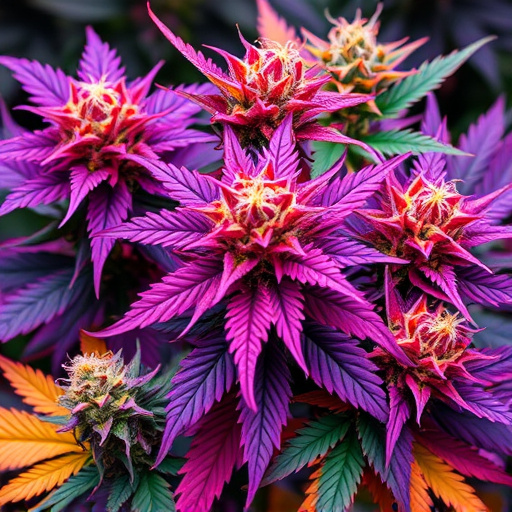
Cannabis trichomes, tiny hair-like structures on cannabis plants, produce essential oils, terpenes,…….
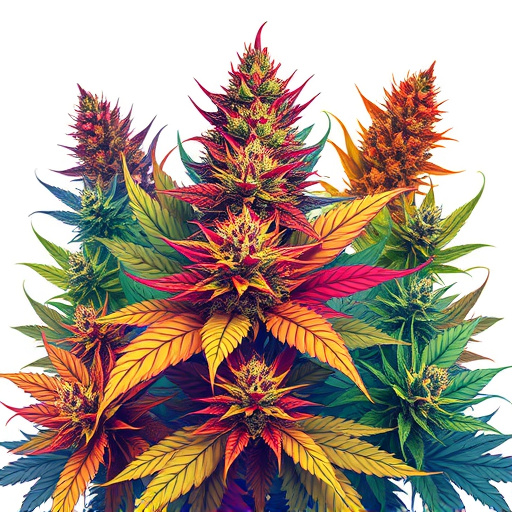
Indica strains like Granddaddy Purple, Blue Dream, and Cherry Pie are celebrated for their relaxing…….
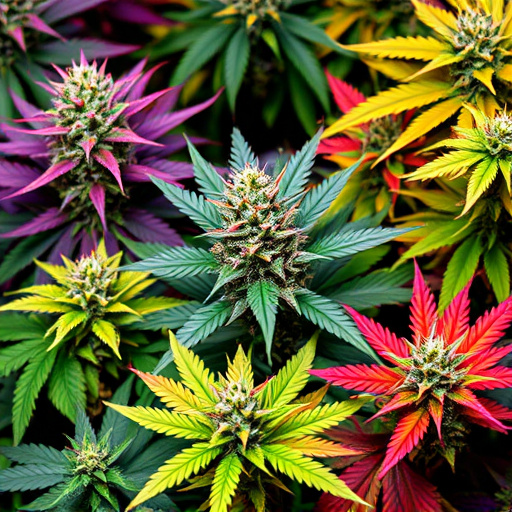
Chronic pain, affecting millions globally, disrupts quality of life. Alternative treatments like col…….
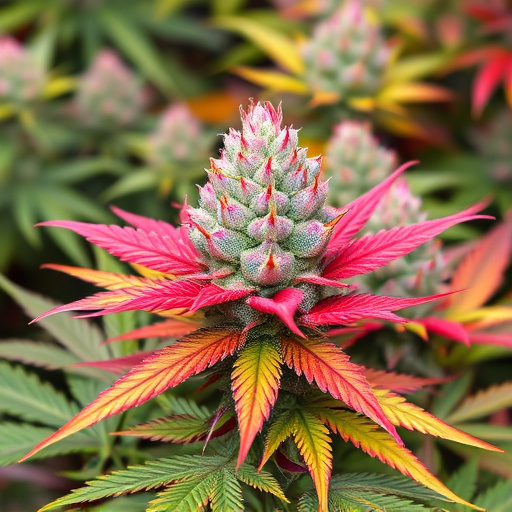
In the dynamic cannabis market, colorful marijuana strains stand out not just for their aesthetic ap…….